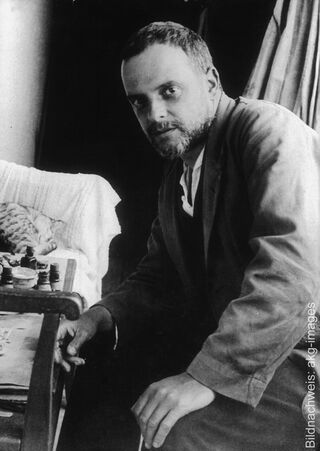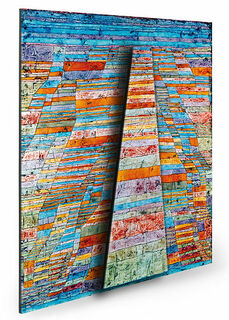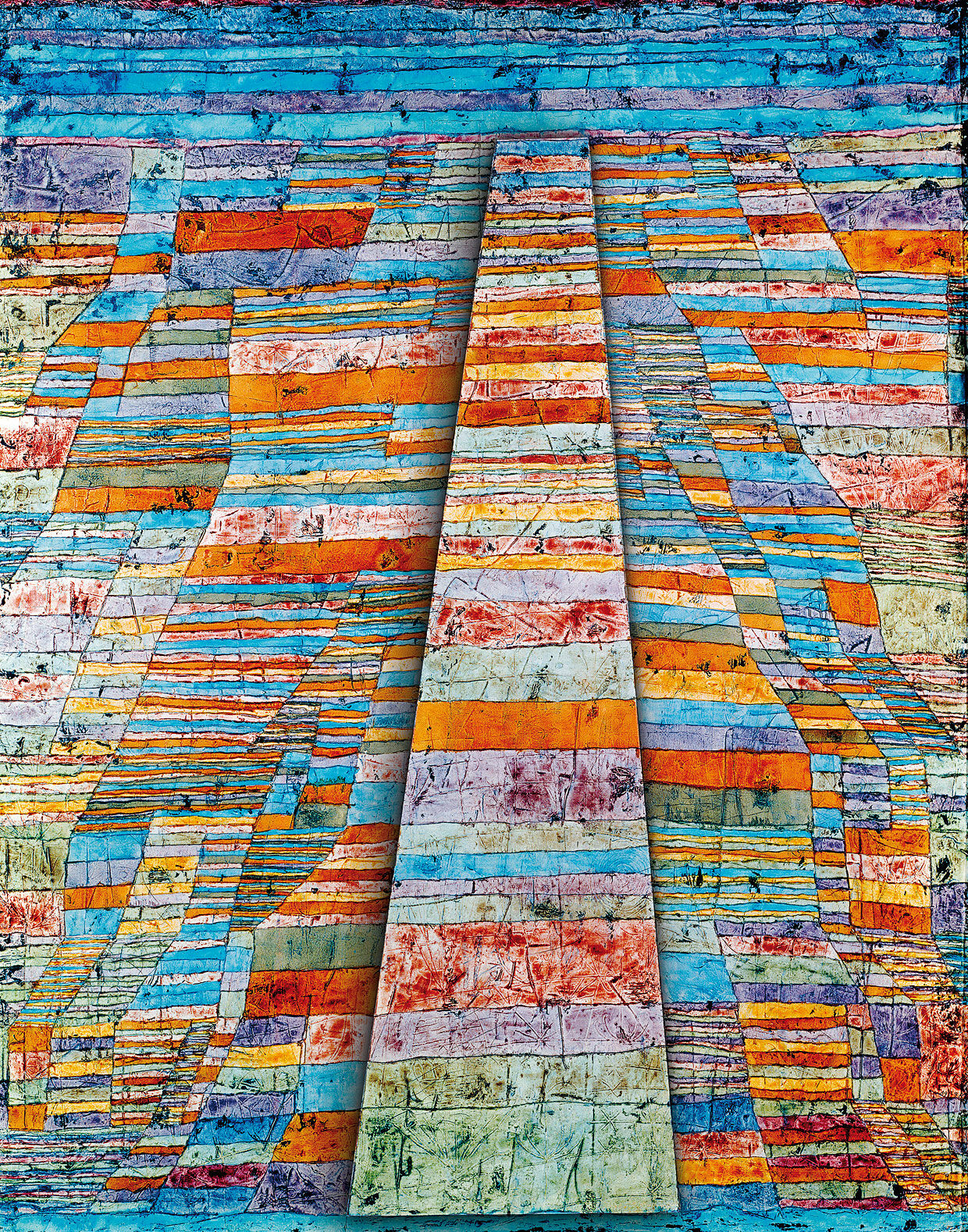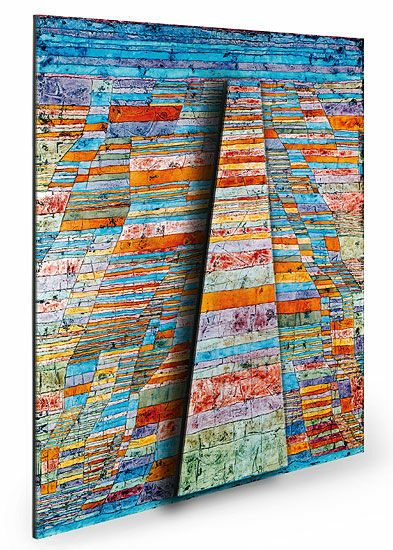Picture "Highway and Byways" (1929), dimension 2


Picture "Highway and Byways" (1929), dimension 2
Quick info
limited, 499 copies | numbered | reproduction on Alu-Dibond behind acrylic glass | size 96 x 75 cm (h/w) | suspension device
Detailed description
Picture "Highway and Byways" (1929), dimension 2
"Highway and Byways" is one of his most famous paintings. It is part of his numerous layered and striped paintings. Klee painted it in January 1929, after his second trip to Egypt. With this painting, he processes the experiences of light and colour in Egypt- the atmospheric key to understanding an ancient culture - the blue of the Nile, the yellow-orange of the Egyptian sun and the colour layers of the ornamental bands in the burial chambers of Assuan.
Original: 1929, oil on canvas, 83 x 67 cm, Museum Ludwig, Cologne.
The reproduction on two levels impressively directs the viewer's gaze to the central message of the picture. This modern type of reproduction on acrylic glass enables a high colour brilliance and, at the same time, unfolds a previously unknown presence in the room. Here, the classics of art history become modern spatial objects.
Dimension 2: Reproduction on 2 levels on Alu-Dibond behind 3 mm thick acrylic glass, limited to 499 copies and numbered. Total size 96 x 75 cm (h/w). Detail 2nd level 84 x 26 cm (h/w). With suspension device. Due to the smooth surface, mirror effects may occur depending on the incidence of light.
Customer reviews

About Paul Klee
He was called "the unique one" by his fellow artists: Paul Klee (1879-1940) shaped the understanding of modern art like hardly anyone else. With his mosaic-like composed works, he created a completely new style.
Born in Bern in 1879, Klee, a German-Swiss, turned out to be a double talent from an early age on: both his drawing skills and his violin skills promised him a musical as well as an artistic career. Klee decided on art and went to the Munich Art Academy, where he studied as a student of Franz von Stuck, among others. But it was not so much his academic studies that helped him develop an independent style but rather an extended study trip to Italy with his artist friends. Subtle symbolic depictions full of wit and humour became his trademark. Usually, just small formats and often merely drawings, enchant the viewer.
In 1906 Klee married the pianist Lily Stumpf and they had a son, Felix. The young family lived a very secluded life in Munich. It was only through the draughtsman Alfred Kubin that Klee became acquainted with the group known as the "Blaue Reiter". Klee quickly became friends with Kandinsky and Marc, with whom he shared the conviction that artistic creation was of spiritual nature.
A trip to the North African city of Tunis in 1914 with his painter friends August Macke and Louis Moilliet helped Klee to find new joy in colour and a genuine creative frenzy. "Color possesses me. I don't have to pursue it. It will possess me always, I know it. That is the meaning of this happy hour: Color and I are one. I am a painter." he writes in his diary. This was followed by countless watercolour paintings, with which he developed his own unique style.
Exhibitions organized by the Blaue Reiter made Klee famous. By the time he is appointed as a "master" by the Bauhaus, he already was a celebrated artist. In 1933, the National Socialist campaign against "degenerate art" forced Klee to leave Germany and settle back in Switzerland. With a true work mania, he tried to rebel against an incurable illness that conquers the painter, who is now internationally famous, only a few years later (1940).
Term for paintings and sculptures that are detached from the representational depiction, which spread throughout the entire western and parts of the eastern world from around 1910 onwards in ever new stylistic variations. The Russian painter Wassily Kandinsky, born in 1866, is considered the founder of abstract art. Other important artists of abstract art are K.S. Malewitsch, Piet Mondrian, and others.
This form of presentation comes from the world of professional photographers and exhibition organizers. More and more artists create their works for this aluminium medium in high-tech composite. The metallic surface creates a synthesis with the colours. White areas of the image are shimmering matt-metallic, depending on the light source. They let the picture look classy and puristic. Thanks to the direct colour pigmentation the details are rendered accurately. Alu-Dibond is long-lasting and resistant.
Collective term for the painters and sculptors of the 20th century, such as Pablo Picasso, Salvador Dalí, Joan Miró, Marc Chagall and others, whose works are the most recognized in our times.






